Plant Profiles dive deep on one plant variety each month. They are meant to provide you with enough information to make good growing decisions. A desire to grow gorgeous flowers is one thing. However, discerning if a particular plant is right for you and your climate is a whole other ballgame.
My intention here is to give you as much practical information to make these decisions. However, I’m going one step further and taking you completely behind the scenes to share exactly what has worked for us as well. For this reason, Plant Profiles are broken up into what I’m calling the “Nuts and Bolts (N&B)” and “Behind the Scenes (BTS).”
If you haven’t already, please be sure to read the FFY Introduction to learn more about how Plant Profiles are organized.
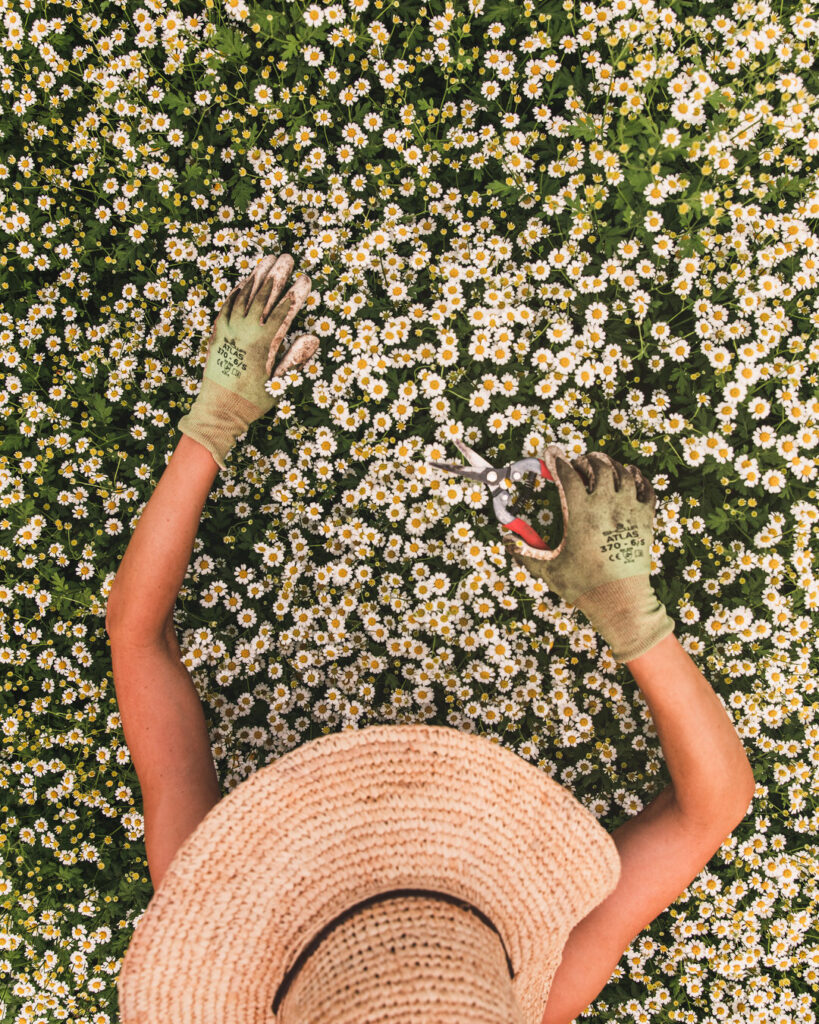
Primary Sources
The primary sources for the N&B portion come from:
- Johnny’s Selected Seeds (Johnny’s): Johnny’s has been in the business for 50 years, with a research farm dedicated to finding the best seeds and tools for farmers and gardeners
- BOSTON Ornamental Terminal Prices. Specialty Crops Market News Federal – State Market News Service, USDA (as of 14-FEB-2023
- Cut Flower Cultural Practice Studies and Variety Trials 2015. Cornell University. H.C. Wein.
Zone Considerations
- Johnny’s Selected Seeds research farm is located in Zone 5a Maine
- My farm, Petal Back Farm, is located in Zone 4b Wisconsin
General Information: N&B
Latin Name Name: Tanacetum parthenium
Common Name: Feverfew, Matricaria
Origin: Native to parts of western Asia and the Balkans
Days to Maturity: 100–110 days
Life Cycle: Tender Perennial (usually treated as annual for cut flowers)
Spacing: 8–12″
Height: 28-48″
While feverfew is native to parts of Western Asia and the Balkans, it now grows throughout the world. It is a tender, or short-lived, perennial in zones 5–9. Feverfew is fabulous as a cut flower, as well as dried. It is easy to grow and harvest, can provide a second flush, and is an excellent filler for bouquets and arrangements.
General Information: BTS
Feverfew is one of my all-time favorite flowers. Surprisingly, though, it is sparse in the literature. Perhaps because it’s easy to grow, but still: I’m surprised it doesn’t get more attention because it’s a workhorse filler for the flower farmer. I gathered what data I could find but am also sharing my personal experience with this dainty darling.
Aesthetically, it has the sweetest vintage vibe. And while I certainly choose flowers to grow for their aesthetics, I also consider their energetics. Feverfew is a mood lifter and in symbolism, it’s said to mean, “you light up my life.” Customers always comment on these “mini daisies” and I’ve already had a few bride requests for them next season (I never guarantee any flower with my brides, but I do try to accommodate when possible). While not all are fond of the scent, I’m particularly drawn to its herbal fragrance. Aside from bulking up market bouquets, it also adds the sweetest touch. On top of that, feverfew is prolific, easy to grow, and pest/disease resistant.
Note: Feverfew is often confused with chamomile, but they are not the same (feverfew has sturdier stems and their scent is different).
What I love most about snaps as a cut flower:
- Easy to grow
- Good vase life
- Upright stems
- Blends well with other flowers
- Bulks up bouquets
- Sweet, vintage vibe
- Great for design
- Popular with customers
- Prolific
- Attract pollinators
- Edible flowers
- Medicinal
- Can be dried
- Pest/disease resistant
But every rose has its thorn, right? Potential shortcomings:
- Scent (but I like it, ha!)
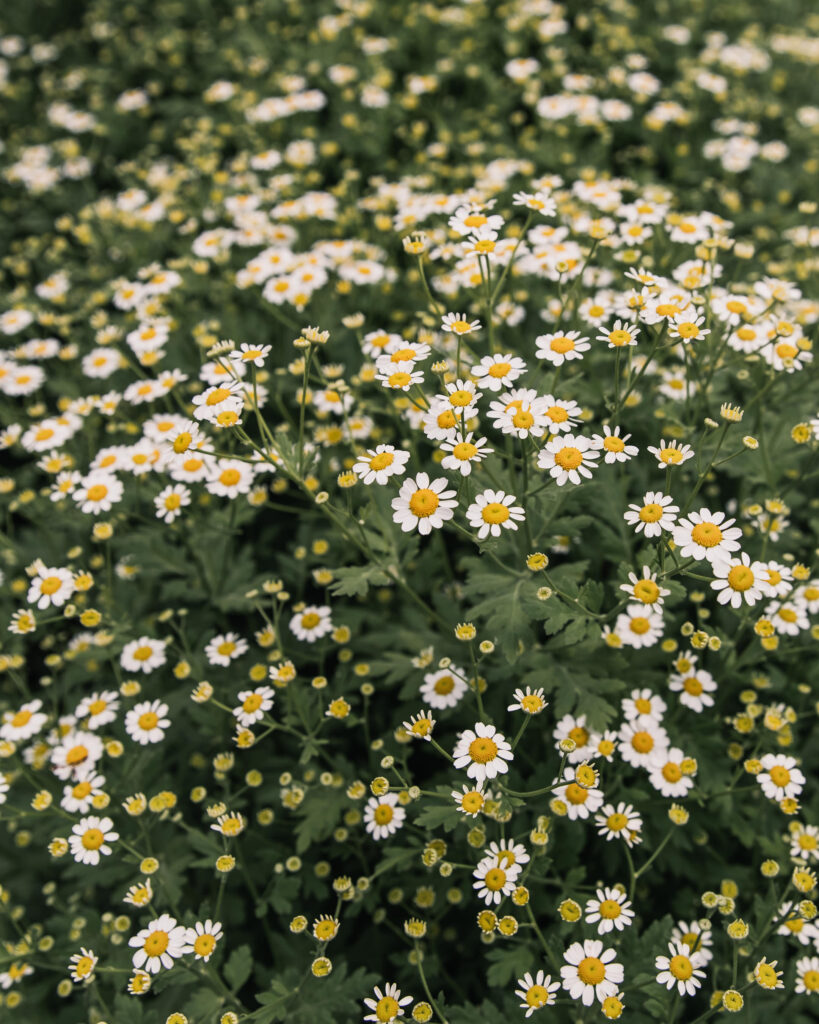
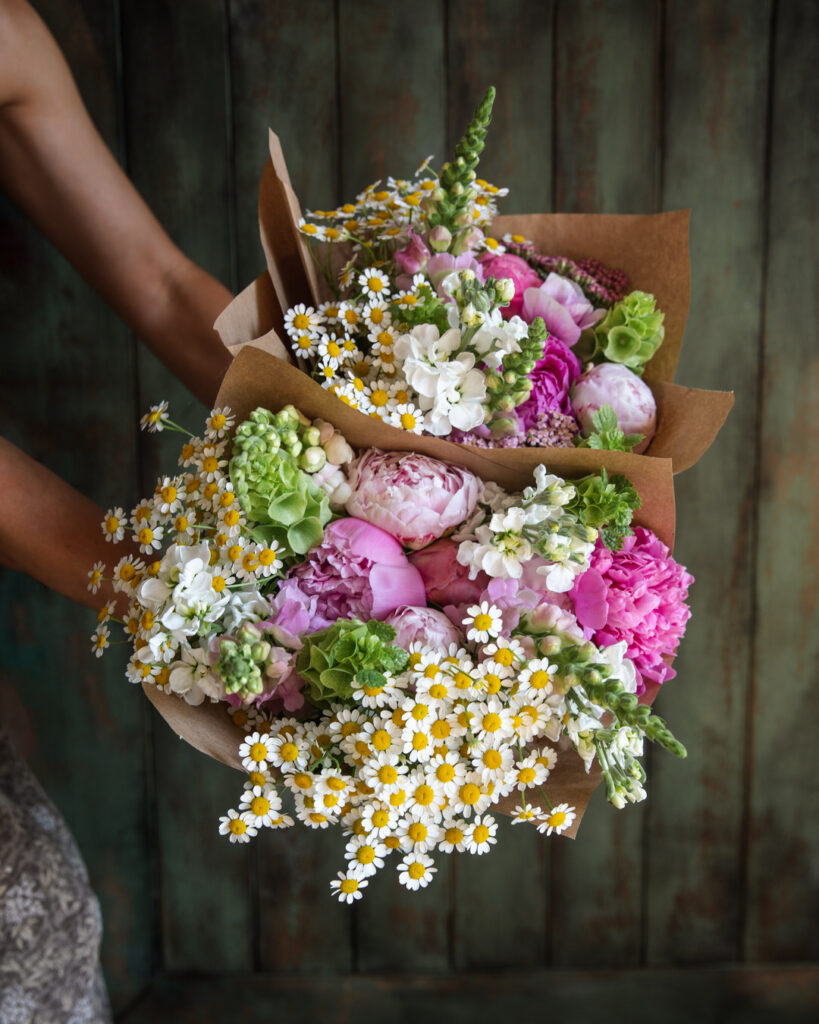
Propagation: N&B
Feverfew is easy to grow from seed, cuttings, or root divisions. Though it is a tender or short-lived perennial in Zones 5–9, it’s best treated as an annual for cut-flower production (Johnny’s). By overwintering outdoors or in a high tunnel, you can achieve tall and abundant stems (as tall as 48″). Johnny’s recommends sowing seeds 5–7 weeks before transplanting in either spring or fall. Gently press the seeds into growing medium, but do not cover as light aids germination. Transplant to cell packs or 3-4″ pots 2-4 weeks after sowing.
Propagation: BTS
We grow our feverfew from seed, sown in 72-cell trays. I do not bump them up, they go straight into the field at this size. The best feverfew I’ve ever grown was overwintered in our high tunnel in Zone 4. While you certainly don’t need a high tunnel to grow great feverfew, the quality of overwintered feverfew is superior (and my zone is a little cold otherwise).
Environmental Factors: N&B
Feverfew can certainly tolerate cold temperatures being hardy to Zone 5, but it also likes sunny warm weather. While it can handle part shade, it’s happiest in full sun in fertile soil. In fact, feverfew is a long-day plant, meaning flowering is generally initiated during the longest days of the season. Plants will eventually bloom under short-day conditions but on shorter stems.
Environmental Factors: BTS
We’ve grown feverfew in the field as well as the high tunnel, but as noted, the high tunnel (especially overwintered) produces a superior crop. Our high tunnel and field get full sun and have well-draining soil. We do have shade cloth in our tunnel due to the high heat in summer, but this doesn’t appear to delay flowering (our high tunnel crop flowers in early June versus field, which flowers right around summer solstice third week of June).
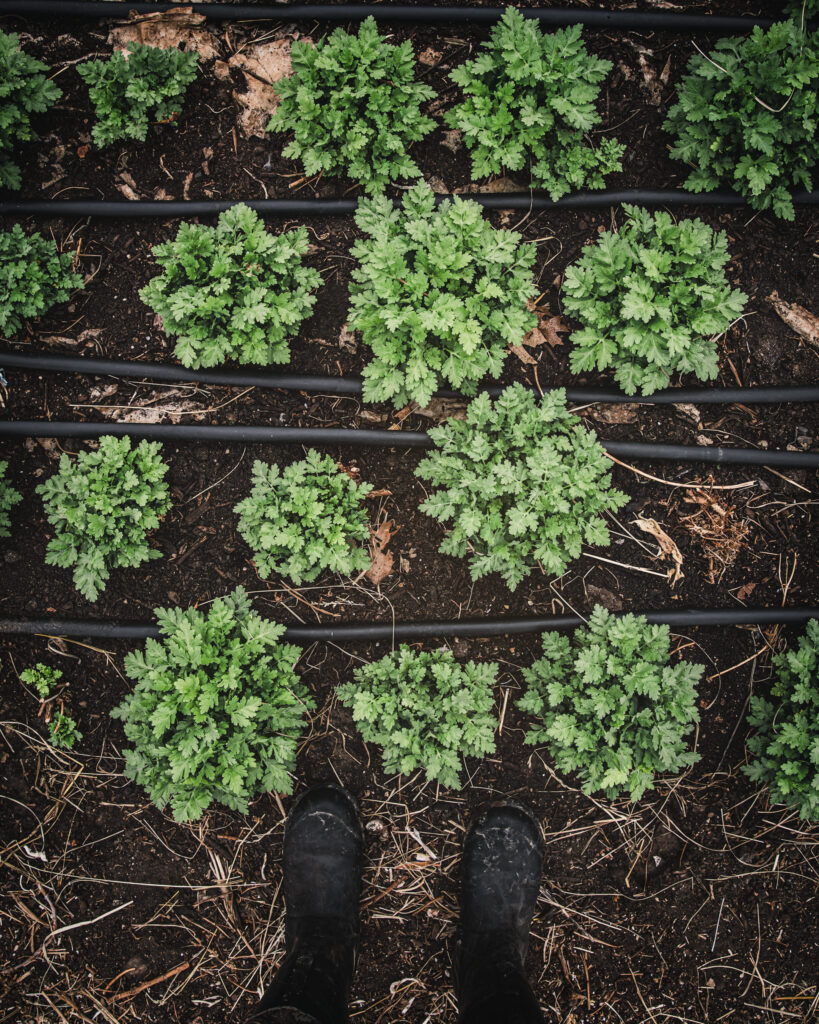
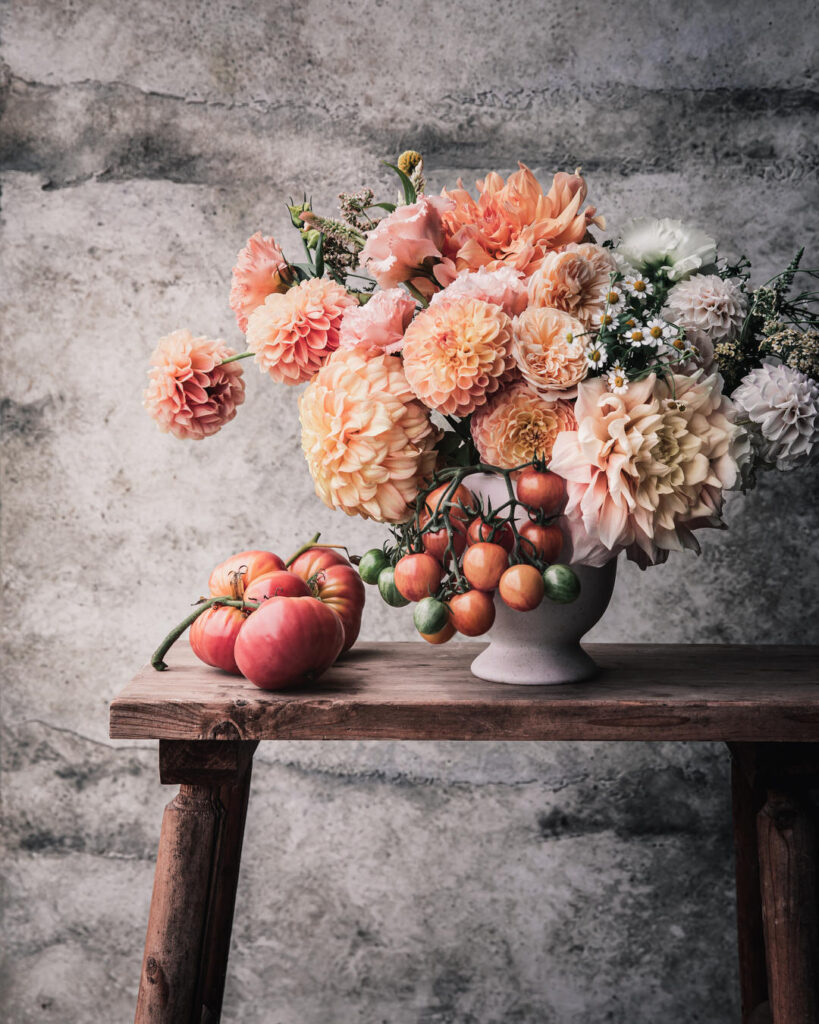
Transplanting, Spacing, Support: N&B
Transplant feverfew in either the spring (for summer production) or fall (for overwintering). An early spring planting in a high tunnel can also produce longer stems. Space plants 8–12″ apart. Not all growers support feverfew, but the corral method is sufficient if support is needed.
Transplanting, Spacing, Support: BTS
We transplant our feverfew at 9-inch spacing. Due to the upright sturdy growth habitat, I don’t find that feverfew needs support (even in the tunnel, where it gets quite tall).
Successions: N&B
Feverfew is prolific and you can typically get multiple harvests off of a plant, but successions every 3–4 weeks ensures a steady supply.
Successions & Groups: BTS
In the past, I’ve only done 2 successions at most but given the popularity and recent requests, I plan to do more in the coming season (though I surmise that quality will drop the later the season and the day length shortens).
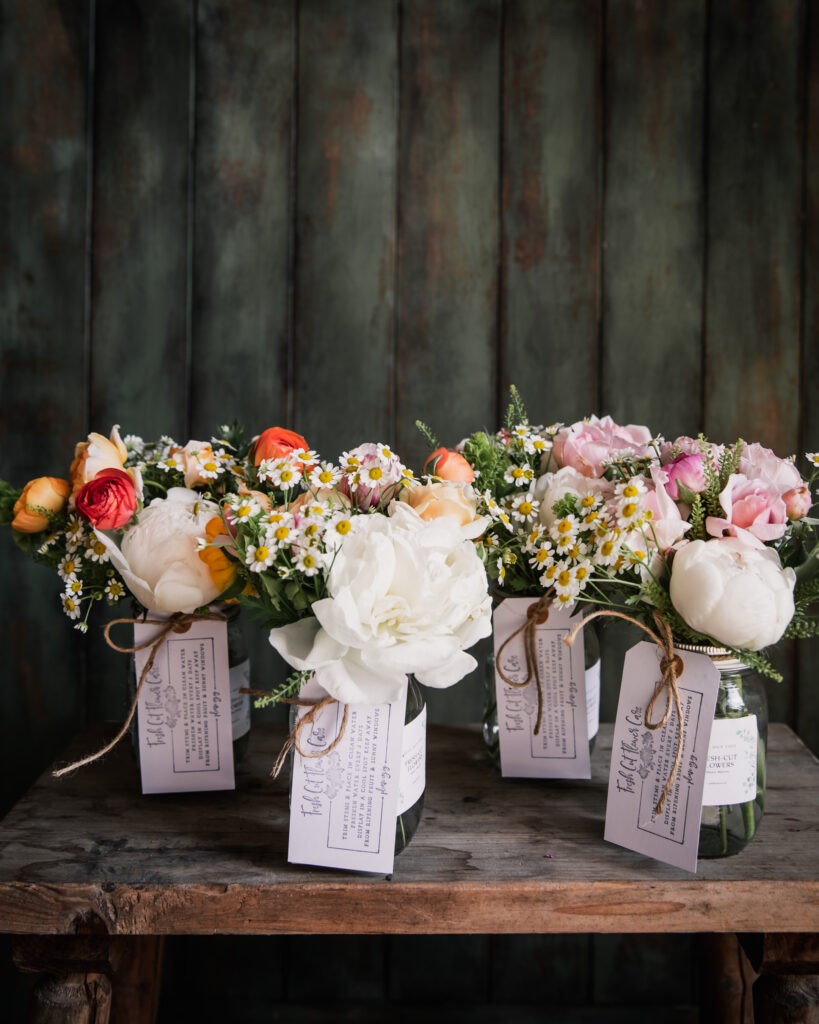
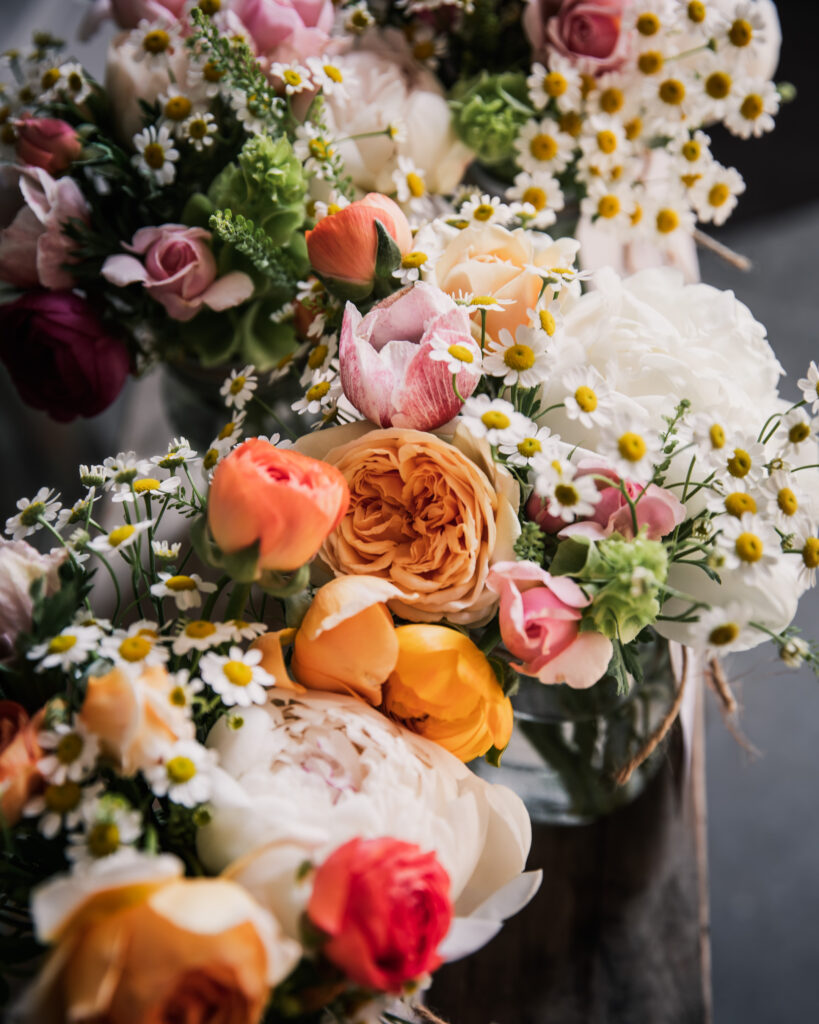
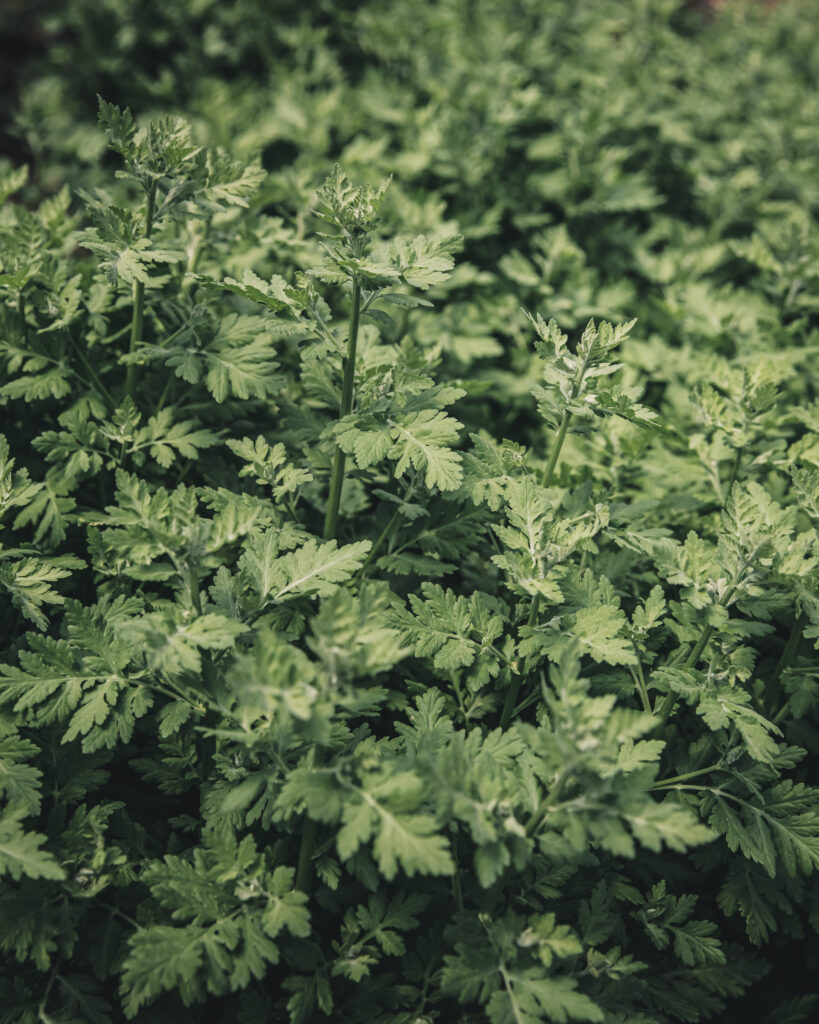
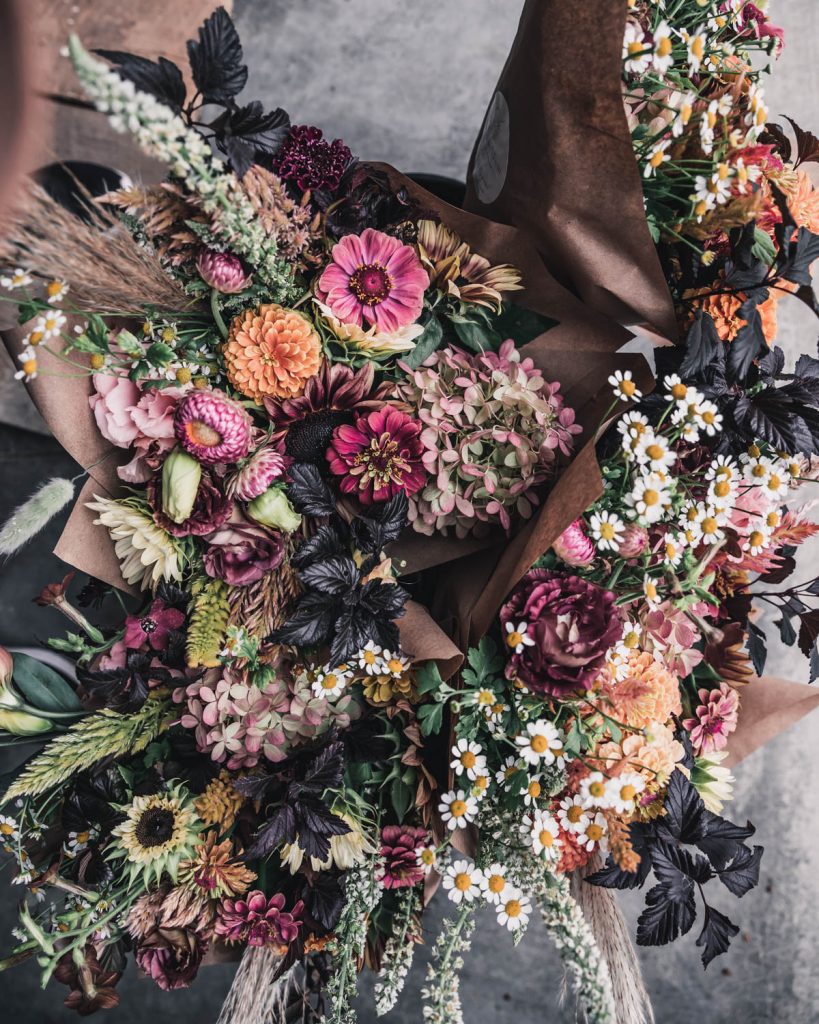
Nutrition: N&B
Feverfew prefers fertile soil, but there is little data on specific nutrition requirements.
Nutrition: BTS
We fertilize our fields organically based on soil tests, and we do not fertilize for each crop individually. I have an eBook that outlines exactly how we do this. I’ve made that available for you here.
Drainage & Irrigation: N&B
Feverfew prefers consistently moist soil (though not saturated and well-draining). Drip irrigation is perfect for this, but if that’s not an option, feverfew will benefit from mulch.
Drainage & Irrigation: BTS
At our farm, we have gossil-loamy sand, meaning that our soil is more sand than loam. It actually drains excessively to the point of leaching nutrients. Our biggest difficulty is keep plants irrigated, especially in dry spells. For this reason, we do have drip irrigation installed on all of our beds at the home farm.
Pinching: N&B and BTS
Plants do not need to pinched.
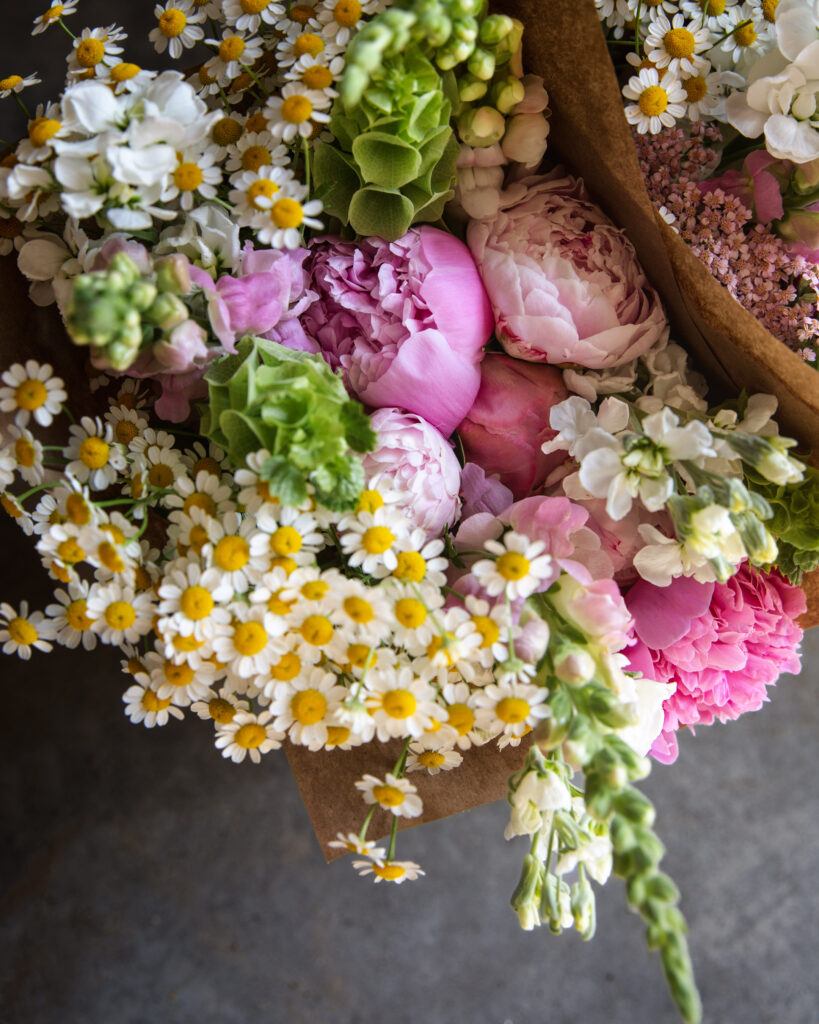
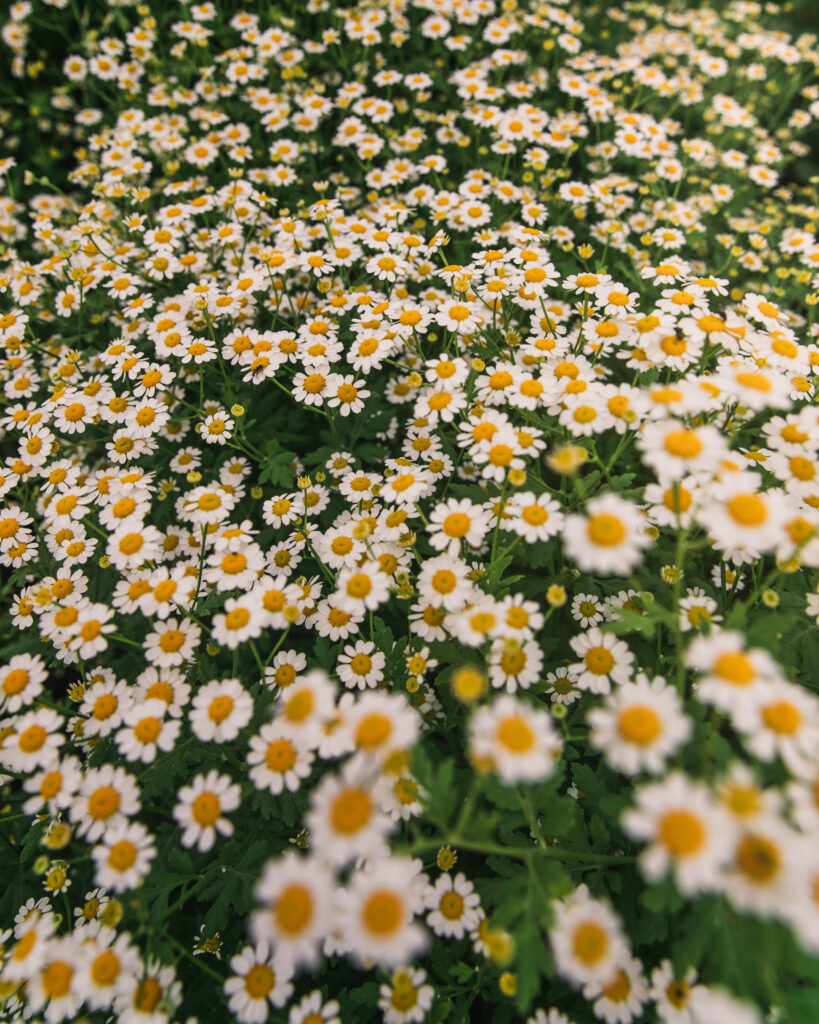
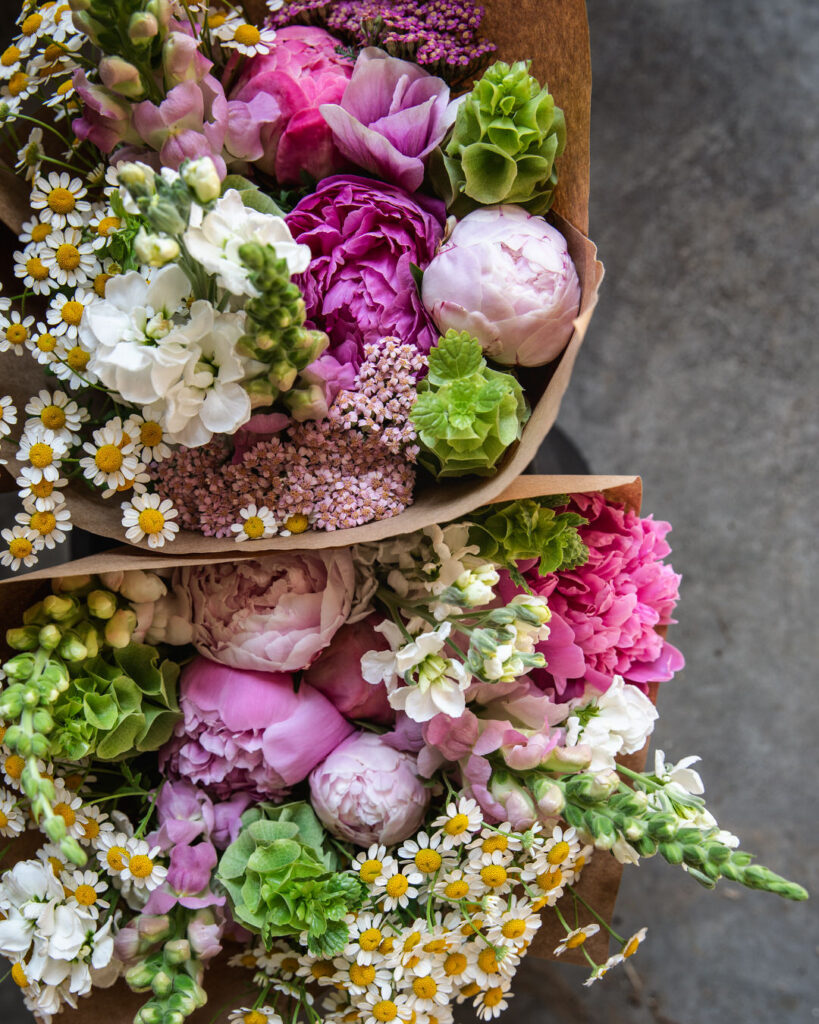
Bloom Period: N&B
Because it is a long-day plant, feverfew typically begins flowering when the days are longest, starting with the summer solstice. Depending on your location, it may put on a second flush. A trial by Cornell reported that plants sown March 30 and transplanted May 11 had first harvests in late June. Production lagged in July and August and then resumed afterward.
Bloom Period: BTS
Our high tunnel feverfew was ready to harvest in early June (and put on a second flush at the end of the season). Field feverfew is a few weeks later in late June (around the solstice).
Overwintering: N&B
For longer stems and earlier blooms, Johnny’s recommends overwintering in zones 5–9 in the field or high tunnel. Transplant 3-4 weeks before last frost.
Overwintering: BTS
The best feverfew I have ever grown was overwintered in our high tunnel. Do I sound like a broken record? I honestly was just so shocked by the difference, it bears repeating. It had zero protection other than the high tunnel itself and came back with a force as soon as temps picked up. It was planted about 4 weeks prior to frost.
Harvest & Post-Harvest: N&B
Johnny’s recommends harvesting when the flower cluster is 3/4 open, more open for dried. Expected vase life is 7–10 days.
Harvest & Post-Harvest: BTS
We harvest as recommended above (too early and flowers will wilt). Feverfew is considered a dirty flower and will turn the water murky even when flower preservative is used. A few drops of bleach or a slow-release chlorine tablet fix this.
Pests & Disease: N&B
Feverfew is very pest and disease resistant. Some growers report occasional aphids, which can be removed with a heavy spray of water. In fact, it’s believed that their herbal scent deters pests but attracts beneficials.
Pests & Disease: BTS
We’ve never had any issues with feverfew.
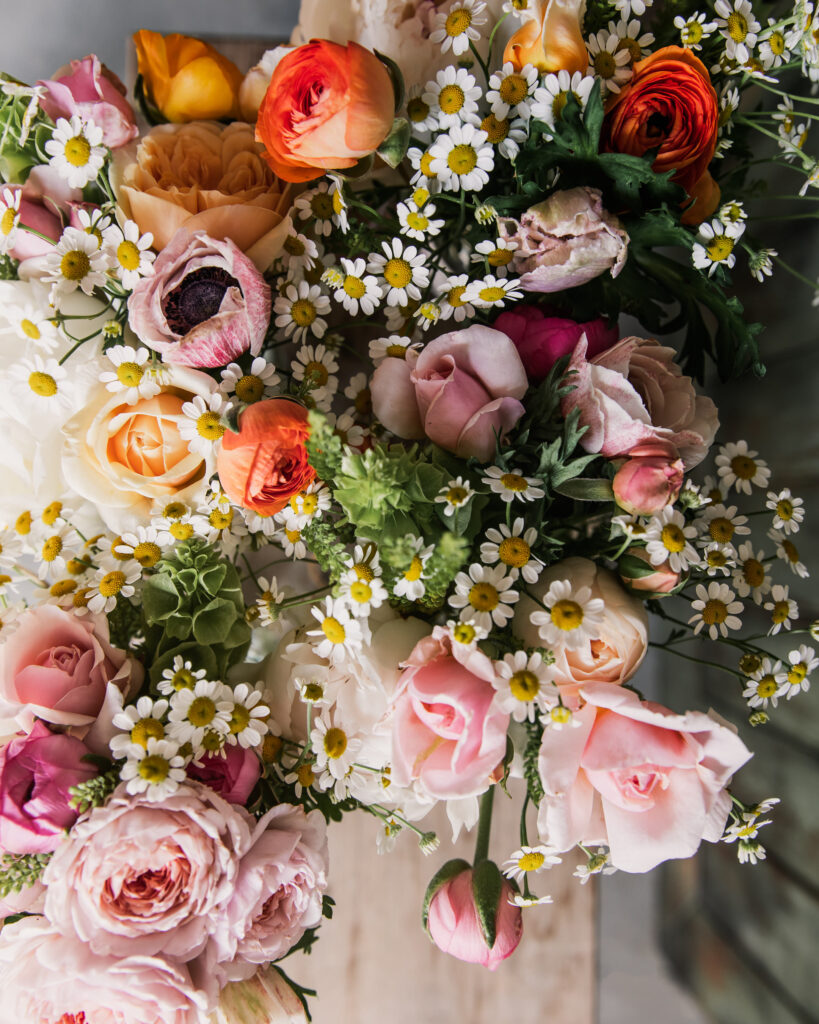

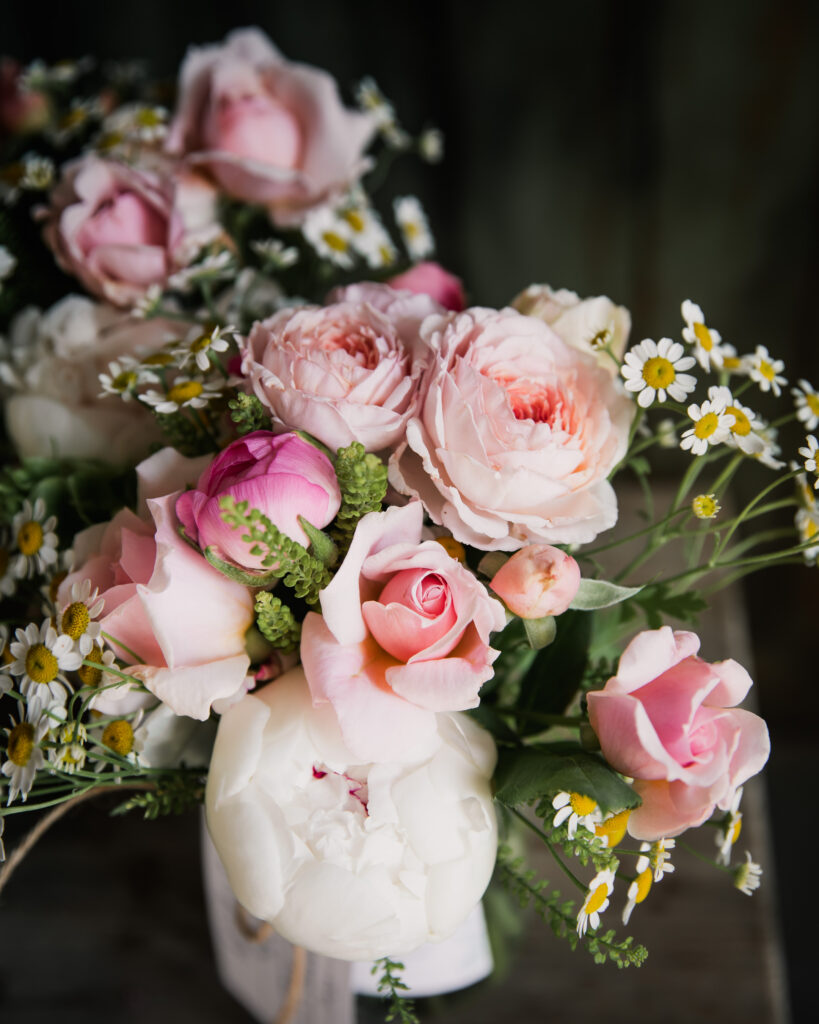
Variety Selection: N&B
Cornell trials reported on the following varieties:
- Magic Lime Green: Plants slightly sprawling, flowers double with tiny petals, attractive yellowgreen color, early, promising.
- Magic Single: Erect plants with light green foliage. Flowers with white petals around yellowgreen centers.
- Ball’s Ultra Double: dark green foliage, flowers double with relatively large petals and small yellow-green centers.
- Virgo: Erect compact plants with relatively few branches; flowers densely double with tiny petals, white with small yellow-green centers. Shortest and least productive variety in trial.
- Snowball Extra: Somewhat low growing with many branches; flowers densely double, petals white with green centers.
- Sunny Ball Gold: medium height plants with few branches; flowers finely double, yellow green. Moderate productivity.
The table below shows their findings on stem length, yield, and earliness:

Variety Selection: BTS
This is one of the rare occasions I don’t go hog wild on varieties. I love the single variety, as do my customers and brides, so that’s what I stick to: Magic Single. I love its upright habitat and ease of harvest too. Johnny’s reports that it’s easier to harvest and strip than other varieties.
Pricing: N&B and BTS
BOSTON Ornamental Terminal Prices as of 02-FEB-2020:
FEVERFEW: Light. bunched 10s CD long 12.50
$12.50 is also my florist price. I don’t typically sell feverfew by the bunch for retail, but I could see these selling well in a Farmer’s Market scenario (which case, I’d probably sell them at 5 stems for $10).
Design: BTS only
Feverfew shines as a bouquet filler, adding a lot of volume. It’s one of those flowers that seems to design itself, filling in the gaps. I also like to tuck into arrangements, specifically deeper at the base after other flowers are in place to fill gaps and create a flowing flower mound (much like yarrow).
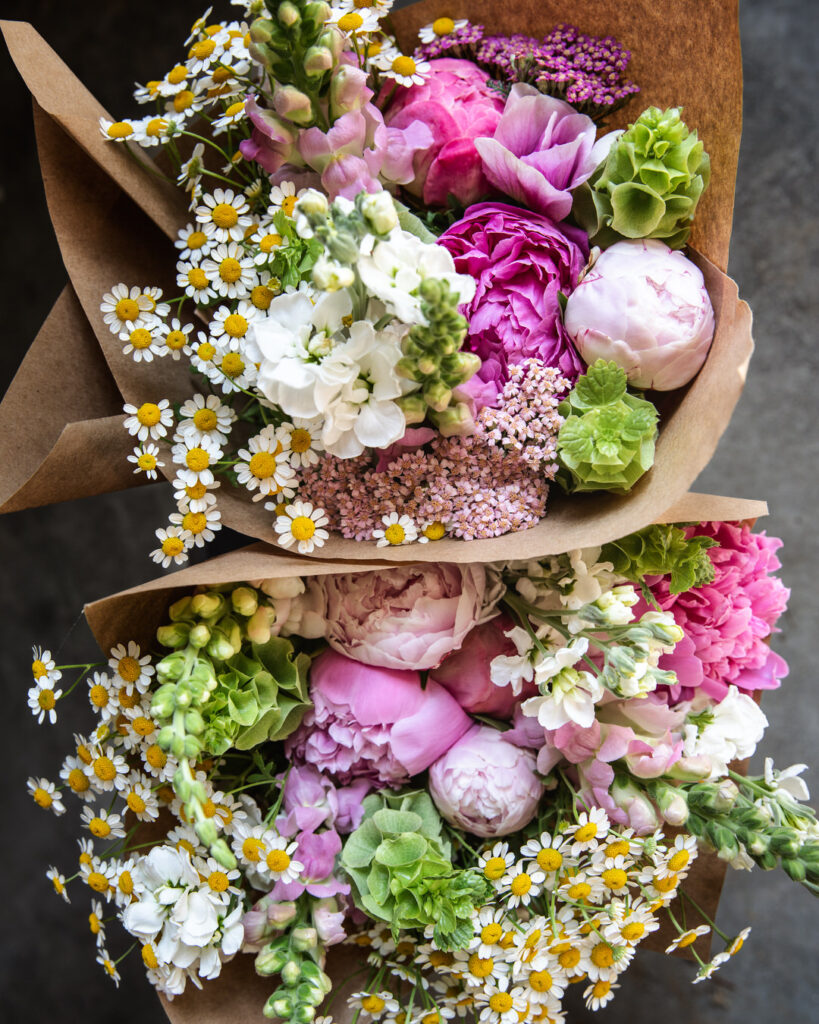
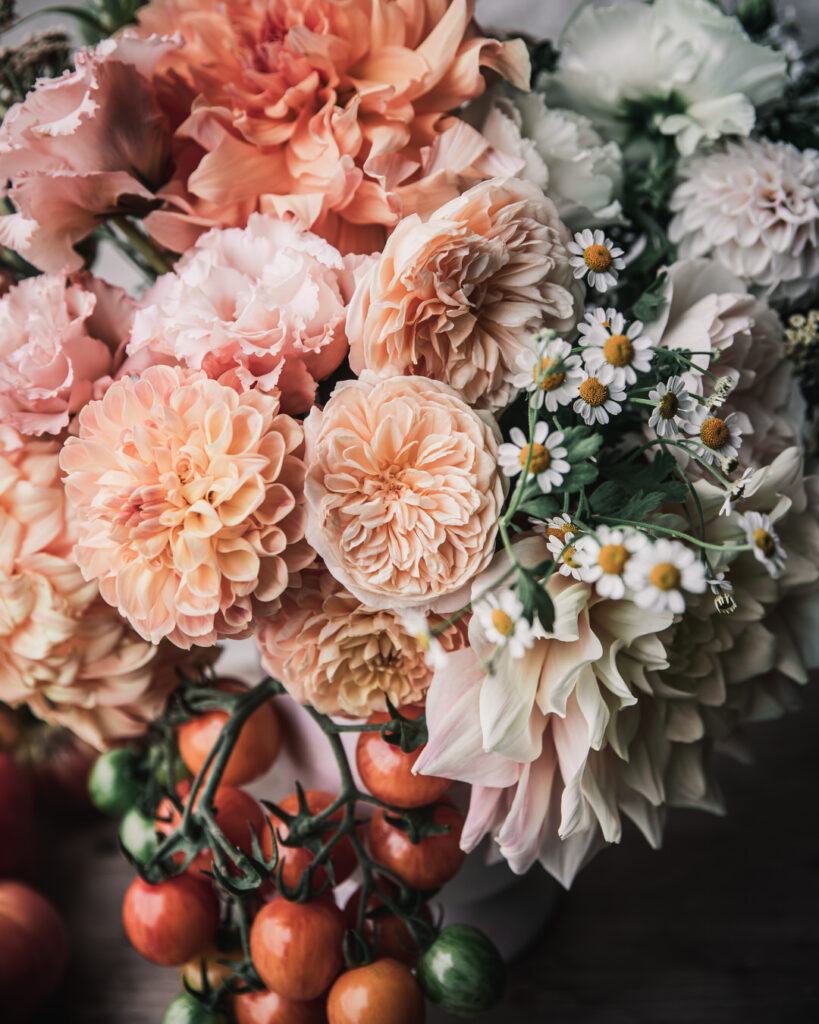
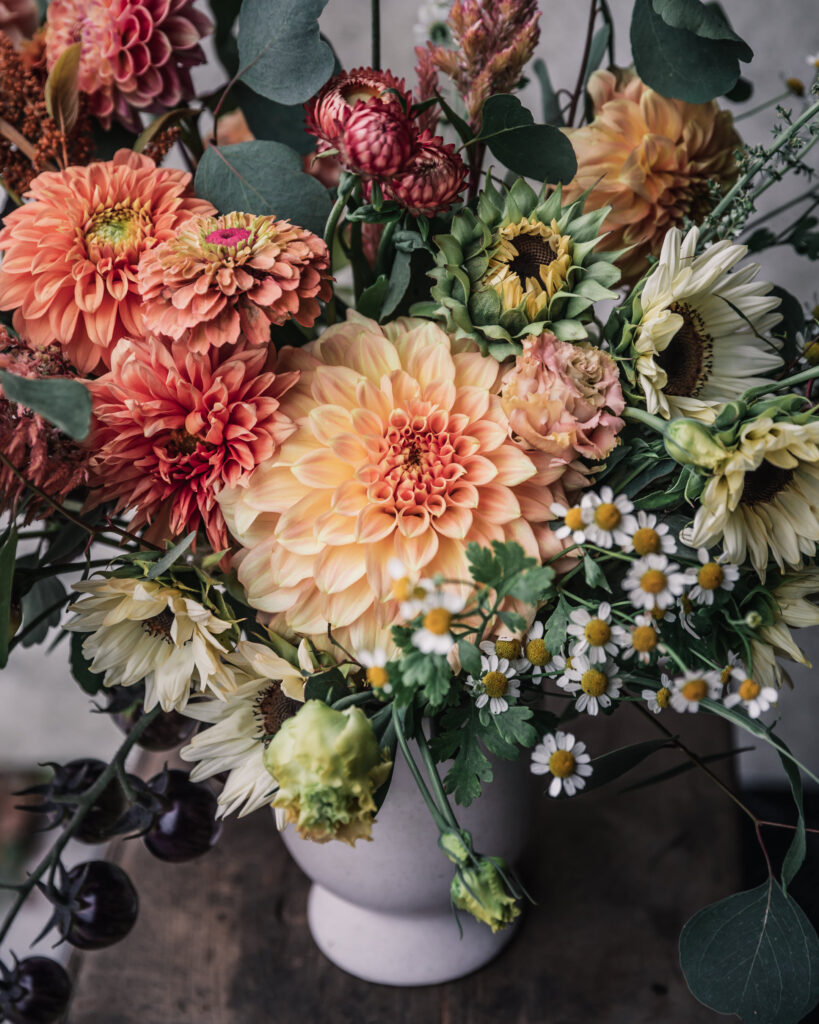

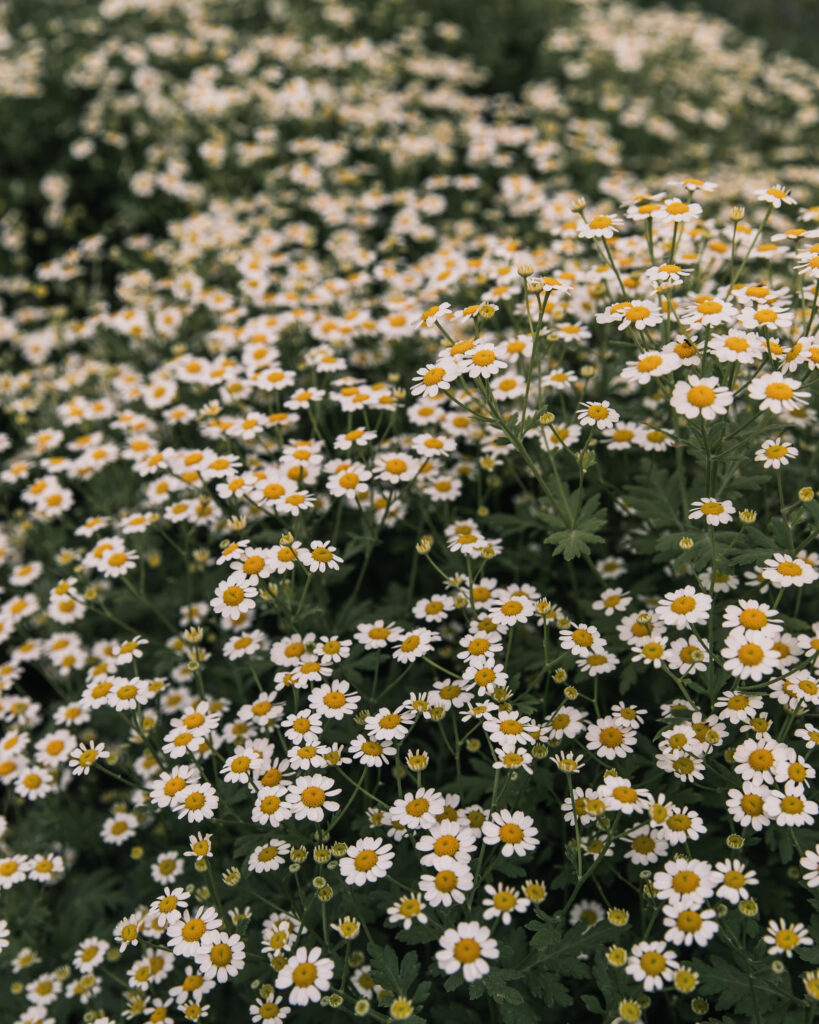

Wrap Up
OK, my friend, that is IT for December’s Plant Profile. What do you think? Did you find some useful nuggets? Is there anything that’s unclear or you wish I would have covered? Or is your head spinning? No worries, you will get a copy of this before May goes live, so you can always refer back it. Tip: use the find shortcut (Ctrl+F on a PC or Command+F on a Mac to search for any word or term).
Have any questions or something you want to share with me or others? I know I say this ad nauseam, but I truly believe in the power of the collective and that we all have something unique and powerful to share, so please leave a question or share a comment below. We’re all better for it, and I thank you in advance!
Cheers pal!
If you start seeds indoors, do you transplant before frost or after?
Great question, Janna! The answer is both, depending on variety. Some flowers, like cold-hardy annuals can tolerate colder temperatures (and in fact prefer them), so we’ll plant them before last frost. Others, like zinnias, cannot tolerate cold as well, so those are planted after last frost (though I tend to push these things). If you check out the Seed Sowing & Planning Spreadsheet, there is a tab called “PBF Draft Seed Sowing Spring” and it is an actual copy of my plan, so you can see when I plan to transplant different varieties. I will call out, though, that this is just my plan. Our weather in the midwest can be downright crazy in spring (last year we had temperatures in the upper 80s and 20 inches of snow in the same week). We watch the weather closely and make choices on transplanting based on conditions. Also, as much as I love a plan, life happens 🙂 I hope that helps but please don’t hesitate if you have any other questions!
Cheers,
Maggie
Sorry, when I saw the question I thought you were asking in general. I realize now that it’s on the plant profile for Feverfew! I will still leave the above comment in case it helps anyone. For feverfew specifically, it can be transplanted before frost, but you should add protection if it’s going to be freezing (though an established plant can handle up to –10F over winter). The best crop I’ve ever grown was overwintered in our high tunnel. For that, you’d sow in late August or early September, transplant in October. For spring planting, it just depends if we are putting them in our high tunnel or out into the field. I hope that helps!